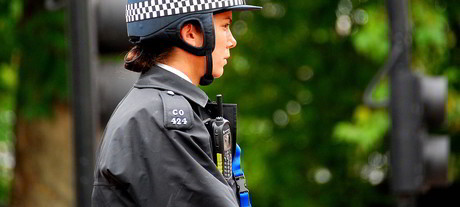UK's ESN labelled "inherently risky"

The UK’s “inherently risky” new Emergency Services Network is running five months late.
The UK Government’s plan to upgrade the radio system used by the emergency services with a system that is “not yet in use nationwide anywhere in the world … carries significant implementation risk,” according to the National Audit Office (NAO).
In a recently released report, the NAO said that the current communication service, Airwave, has “served the emergency services effectively” and has averaged 99.9% availability since April 2010.
However, it is an expensive system, costing £1300 per handheld or vehicle-mounted device per year, and its data capabilities are poor.
A “deteriorating commercial relationship” with Airwave after 2010 meant that the government “did not believe an extension or re-procurement would offer value for money”.
The government has been looking at options to replace Airwave when the contracts expire and has set up the Emergency Services Mobile Communications Programme to carry out this work.
The replacement for the Airwave system, known as the Emergency Services Network (ESN), is expected have lower operating costs by virtue of using parts of an existing commercial 4G network run by EE.

The ESN is inherently high risk, according to the NAO. International comparison work, commissioned by the NAO, has concluded that “the proposed ESN solution is the most advanced in the world, with only one other country — South Korea — seeking to deploy a similar solution”.
The NAO report said there are “significant technical challenges that the programme needs to overcome including working with EE to increase the coverage and resilience of its 4G network so that it at least matches Airwave and developing handheld and vehicle mounted devices as no devices currently exist that would work on ESN”.
Yet NAO adds that the “ESN is the right direction strategically” and “the benefits of ESN should be substantial”, but that the business case is “overly optimistic in its valuation of these”.
“The programme’s planned approach to delivery should maximise these benefits, if successful, but has also maximised the risk,” said the NAO in a statement.
The full report can be downloaded from nao.org.uk/wp-content/uploads/2016/09/Upgrading-emergency-service-communications-the-Emergency-services-Network.pdf. A summary report is available from nao.org.uk/wp-content/uploads/2016/09/Upgrading-emergency-service-communications-the-Emergency-services-Network-Summary.pdf.
More testing needed
It is expected that £1.2 billion will be spent setting up ESN by March 2020 before it starts to realise benefits.
After that time, according the NAO, ESN will “cost an estimated £500 less than Airwave per device per year and will have better data capabilities, allowing the emergency services to operate more effectively”.
“The ESN programme has an energetic, delivery-focused culture that has helped it retain staff and manage issues as they have emerged,” the NAO report said, adding, “Nevertheless, the programme is at least five months behind the schedule agreed a year ago and has responded by squeezing the time available rather than extending the overall timeframe.”
“Its management of its key risks needs to improve if it is to deliver ESN successfully, including: the programme’s approach to technical assurance and testing; user engagement and more clarity on the contingency arrangements for extending Airwave.”
The programme is “not intending to force the emergency services to transition to ESN” but has instead assured them that they can stay on Airwave until ESN is “at least as good as Airwave”.
According to the NAO, defining this is “complex and leaves room for disagreement”.
“The need to save money and get out of a difficult commercial relationship has led the government to try and move to an approach that is not yet used nationwide anywhere in the world,” said Amyas Morse, head of the NAO.
“The programme remains inherently high risk and while steps have been taken to manage these risks we are concerned that these are under-rated in the Home Office and elsewhere.
“The programme needs to put in place more independent testing and assurance regimes for its technical solution and urgently improve its approach to engaging with the emergency services.”
**************************************************
ESN by the numbers
70% — Percentage of Great Britain’s landmass, as measured for ESN purposes, covered by EE’s 4G network in July 2016. This needs to be increased to 97% to match Airwave’s coverage.
£3.6bn — Estimated value of the quantified benefits over 17 years resulting from switching to the ESN.
£1.2bn — Estimated cost of ESN, April 2015 to March 2020. After March 2020 ESN is expected to save money compared to Airwave.
412 — Number of public organisations using Airwave in 2016, with an estimated 328,000 Airwave devices in use within these organisations.
99.9% — Average availability of the Airwave network between 2010 and 2016.
£500 — Estimated annual saving per device (handheld or vehicle mounted) used by the emergency services once the transition to ESN is complete.
5 months — The minimum length of time the programme is currently behind schedule compared to the full business case. The programme considers this will be recovered before the ESN goes fully operational.
£475 million — Estimated cost to the taxpayer of a 12-month nationwide delay in the time taken to transition to ESN.
Why P25 technology remains a good fit for public safety communications
Digital LMR technology ensures police officers, firefighters and emergency management teams can...
From past to present: leveraging satellite data for better disaster resilience
Whether monitoring flood-prone regions or assessing wildfire-prone landscapes, historical...
Lancashire Police adds in-car video to full vehicle fleet
Motorola Solutions' M500 in-car video solution observes a vehicle's environment from...





